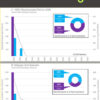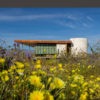Author Evan Markiewicz is Executive Director of ViviendasLeón.
I am currently the Executive Director of ViviendasLeón, an organization I founded based in the U.S. and Nicaragua. It is the result of work that began in Nicaragua in 1993. I first traveled to León that year, thirteen years after the success of the Sandinista Revolution, and 3 years after the FSLN became an opposition party in the 1990 national elections. The objective was to discover whether architecture could be a vehicle for social change, and a catalyst for social order.
I entered architecture school in 1974, having grown up during the Vietnam War, the peace movement, and the social transformation that was taking place. I brought with me the certainty, not unusual at the time, that architecture was a medium that could embody social ideals; that, because it occupied the public realm, was an aesthetic medium (thus communicating visually), and spatially supported the interactions of people and the activities of institutions, architecture could be a vehicle for social change.
By contrast, my experience in school emphasized the consistency of a project’s internal logic, the creative imagination one brought to the assignment, and the importance of being the sole author of a design. While there were frequent discussions of the social importance of architecture, there was little in the way of a foundation, developed from a social agenda, to build from. In the end, we were being trained as members of a professional class in support of an economic system, not as revolutionaries.
As a result, what was once a certainty became a question in search of an answer. While my analytical and creative abilities were developed, a meaningful basis for decisions remained a mystery, and the larger questions of architecture’s potential to be a vehicle for social change went unanswered.
I started to take seriously these unanswered questions in 1993, when I began working with an international solidarity organization with the idea of forming a construction program. I thought that to work in communities that had literally no permanent buildings would be to discover the social importance of architecture. It was consistent with the organization’s mission to develop progressive North-South relationships with Nicaragua and to improve, through community development, the standard of living of rural communities, some of the poorest in the Western Hemisphere.
The program that was developed brought U.S. volunteers to work on delegations during the summer on school construction projects. Between 1993 and 1998, we built a total of six preschools and, between 1999 and 2004, four houses for rural families. All of these projects were built with communities and volunteer delegations. They were experiments in making the best use of traditional building materials and methods that intended to reinforce an existing construction culture. We introduced rammed earth construction, a safer form of the same adobe construction they had used for 300 years. The buildings were engineered to resist earthquakes, so that by example we were supporting their culture by building with earth, while demonstrating a novel way to improve safety.
The idea to build schools fit my interest in buildings that could reflect a social agenda. We were building something permanent for the first time in communities that had lived for countless generations in rickety buildings built without floors and of discarded materials. Our methodology included the participation of all members of the project, thus shifting the creative role from one person to many. This was the first project they had imagined and built collectively, and one that represented the effort of the entire community. With the construction of a school, the community felt much more committed and connected to their place.
In 1997, I began work on a project to bring more economic independence to the León region. By 2002, we had developed a staff in León and completed two of three houses in a pilot program that demonstrated the ability to build for working families, offer credit far below the market, and form partnerships that insured repayment of the loans. It was the beginning of what is now ViviendasLeón, an organization that designs and builds affordable housing and makes available affordable credit to working families. ViviendasLeón also continues to operate as a volunteer program using the same model as before, supporting rural communities with school and housing construction.
It has taken twelve years to build the organization in two countries that I now run. It has required the use of much of the practical knowledge I had acquired earlier, both in school and while working as an architect. ViviendasLeón now offers the opportunity to work on the design of buildings with communities or groups of families, investigate new construction materials and methods, run an organization that defines projects and significantly controls their trajectory, and most importantly do the kind of work that is most meaningful.
This year, ViviendasLeón is preparing to enter its next phase, which will include the construction of nearly 400 units of housing over the next three to five years for the medical professors and technical workers of the Universidad Nacional Autonoma de Nicaragua (UNAN) on various sites. With this new scope of work, it is my hope that we can engage the architecture community in a meaningful investigation of the potential of architecture as a social enterprise that contributes to the intelligent development of a new society in Nicaragua.
Originally published 2nd quarter 2005, in arcCA 05.2, “Other Business.”





